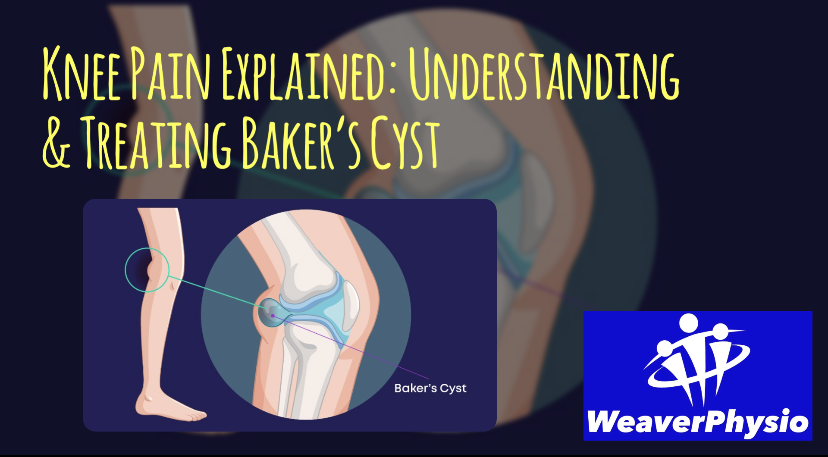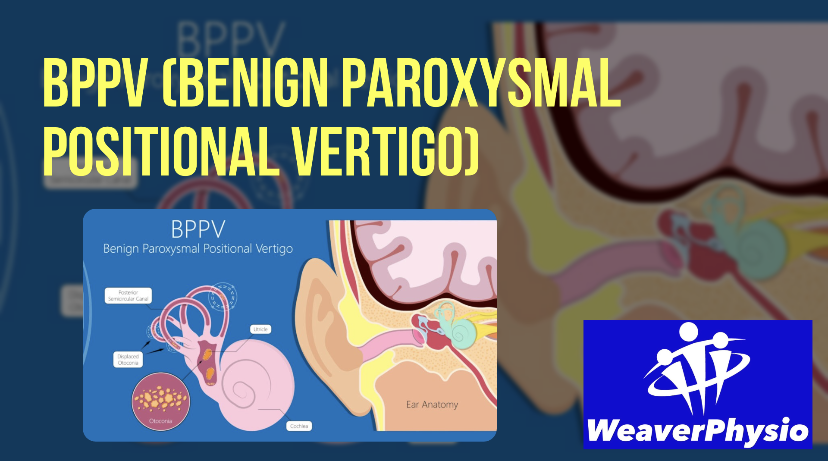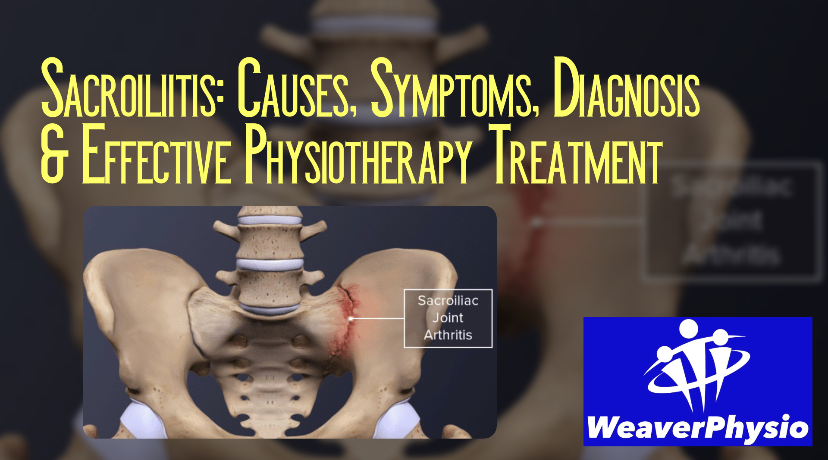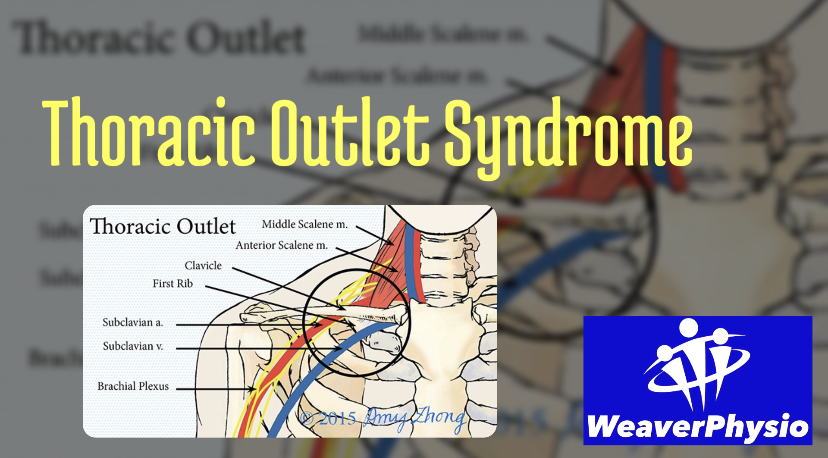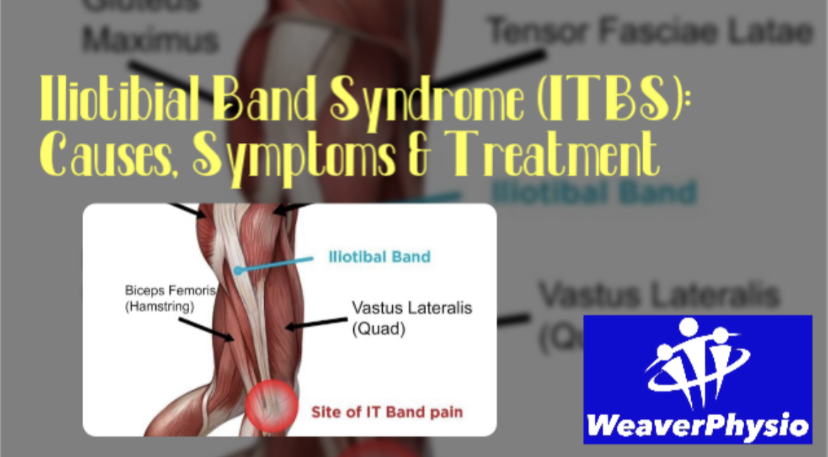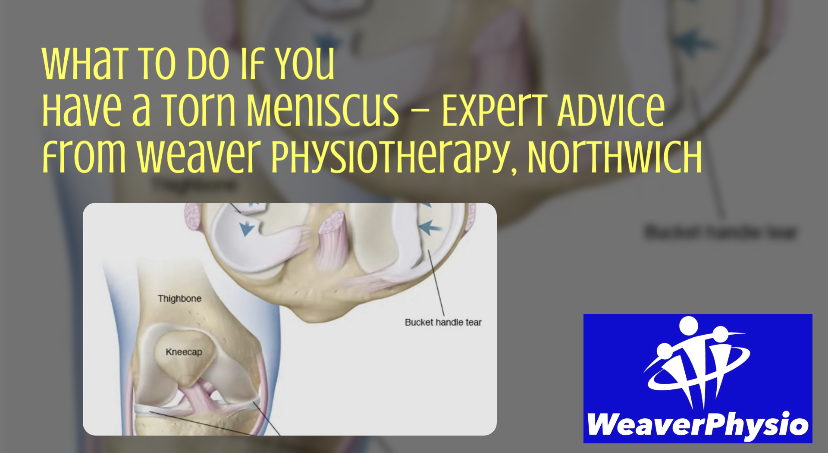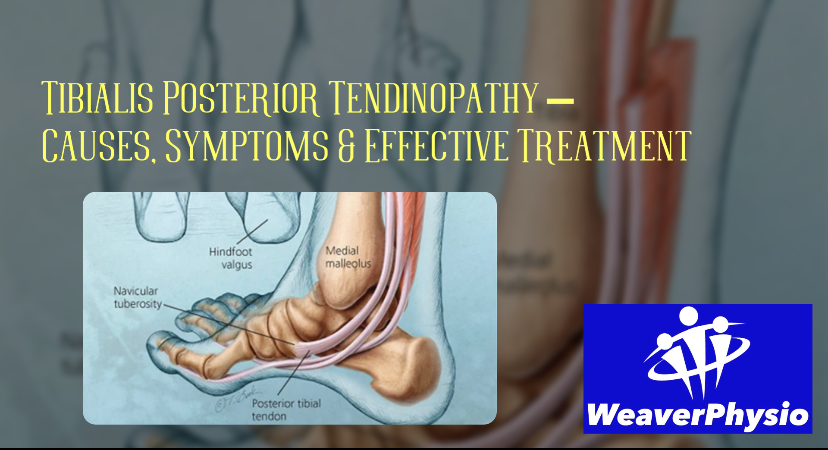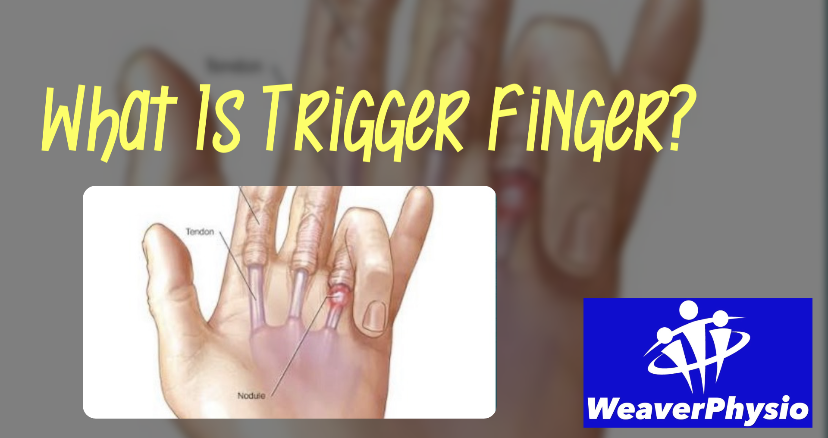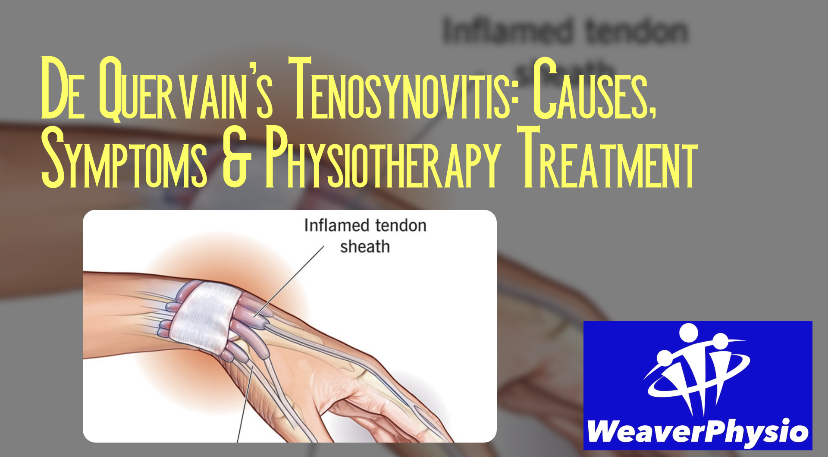What Is Olecranon Bursitis?
Causes, Symptoms & Expert Physiotherapy Treatment in Cheshire | Weaver Physio
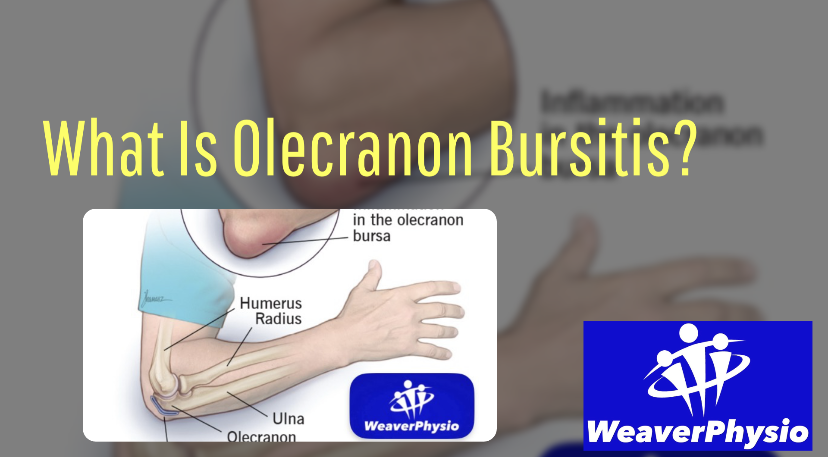
If you’ve noticed a soft, swollen lump on the back of your elbow that feels tender or looks red and puffy, you could be dealing with Olecranon Bursitis. This common but often misunderstood condition can make it uncomfortable to rest on your elbow, bend your arm, or perform everyday tasks.
At Weaver Physiotherapy & Sports Injury Clinic in Northwich, Cheshire, our experienced physiotherapists treat Olecranon Bursitis regularly — helping you reduce swelling, relieve pain, and restore full movement safely and effectively.
In this guide, we’ll explain:
• What Olecranon Bursitis is
• The common causes and risk factors
• Key symptoms and warning signs
• How it’s diagnosed and treated
• When physiotherapy can help
• Practical tips for recovery and prevention
Understanding Olecranon Bursitis
Your elbow joint is surrounded by several small, fluid-filled sacs called bursae. These act as cushions, reducing friction between bones, muscles, and tendons. The olecranon bursa sits just over the bony tip of your elbow — known as the olecranon process of the ulna.
When this bursa becomes irritated or inflamed, it fills with extra fluid, causing a visible lump or swelling on the back of the elbow. This is known as Olecranon Bursitis (sometimes called “student’s elbow” or “miner’s elbow”).
Although it’s not usually dangerous, the swelling and tenderness can make bending your arm painful and restrict your movement. In some cases, infection (known as septic bursitis) can occur and needs prompt medical attention.
Common Causes of Olecranon Bursitis
There are several reasons why the olecranon bursa can become inflamed. The most common causes include:
1. Repetitive Pressure or Friction
Resting your elbows on hard surfaces for long periods (e.g. office desks, worktops, or floors) can irritate the bursa over time. This is why it’s sometimes nicknamed “student’s elbow.”
2. Direct Trauma or Injury
A sharp knock or fall onto the point of the elbow can cause the bursa to fill with fluid or blood, leading to painful swelling.
3. Infection (Septic Bursitis)
If bacteria enter through a small cut, scrape, or puncture near the elbow, the bursa can become infected. The area may appear red, hot, and swollen, and you might develop a fever. This type of bursitis requires urgent medical care.
4. Underlying Health Conditions
Conditions such as gout, rheumatoid arthritis, or kidney disease can increase inflammation in the body, making bursitis more likely.
5. Repetitive Overuse Movements
Jobs or sports involving frequent elbow bending or leaning (e.g. plumbers, electricians, wrestlers, or weightlifters) can lead to chronic irritation of the bursa.
Symptoms of Olecranon Bursitis
Symptoms can range from mild swelling to severe pain and restricted movement. You might notice:
• Visible swelling or a lump on the back of the elbow
• Tenderness or aching when bending or straightening the arm
• Warmth or redness over the area
• Reduced range of motion in the elbow
• Pain when leaning or applying pressure on the elbow
• Fever or general unwellness (in cases of infection)
In non-infectious bursitis, the swelling is often painless but can feel soft or squishy. In septic bursitis, pain is typically more intense, and the skin may appear red or shiny.
Diagnosing Olecranon Bursitis
A proper diagnosis helps ensure effective treatment and rules out other causes of elbow pain, such as:
• Triceps tendinopathy
• Elbow arthritis
• Gouty tophi
• Soft tissue infection
At Weaver Physio, our Chartered Physiotherapists start with a comprehensive assessment, including:
• Detailed discussion of your symptoms and activity levels
• Physical examination of the elbow
• Range of motion and strength testing
• Palpation to assess swelling, tenderness, and warmth
In some cases, your GP may arrange:
• X-rays – to rule out bone spurs or fractures
• Ultrasound – to confirm fluid in the bursa
• Aspiration (fluid sample) – if infection is suspected
Treatment Options for Olecranon Bursitis
Treatment depends on the cause, severity, and whether infection is present.
1. Initial Self-Care (for Mild Cases)
If the swelling is mild and not infected, you can often start with simple home measures:
• Rest: Avoid leaning on or bumping your elbow.
• Ice: Apply an ice pack for 10–15 minutes every few hours to reduce swelling.
• Compression: Use an elastic bandage or sleeve to control inflammation.
• Elevation: Keep your arm raised when possible to aid fluid drainage.
These measures can help symptoms settle within 1–2 weeks.
2. Medical Management
If swelling persists or infection is suspected, a GP may recommend:
• Antibiotics (for septic bursitis)
• Aspiration: Draining the fluid with a sterile needle
• Corticosteroid injection: To reduce severe inflammation
• Protective padding: To reduce pressure during healing
3. Physiotherapy Treatment at Weaver Physio
Once infection has been ruled out or treated, physiotherapy plays a key role in restoring normal movement and preventing recurrence.
At Weaver Physiotherapy & Sports Injury Clinic in Northwich, we focus on:
✅ Reducing Pain & Swelling
Using gentle manual therapy, soft tissue techniques, and electrotherapy to promote healing and reduce local inflammation.
✅ Restoring Mobility
Guided range-of-motion and stretching exercises help you regain flexibility and reduce stiffness around the joint.
✅ Strengthening & Conditioning
As symptoms settle, our team designs a tailored strengthening programme targeting the triceps, forearm, and shoulder muscles to improve joint stability.
✅ Posture & Ergonomic Advice
If repetitive pressure or desk work contributed to your bursitis, we’ll assess your posture and workspace setup to prevent it returning.
✅ Functional & Sport-Specific Rehab
For athletes, tradespeople, or gym-goers, we provide graded return-to-activity plans, ensuring you regain confidence and avoid flare-ups.
✅ Combined Treatments for Lasting Results
Many clients benefit from integrated treatments, including:
• Sports Massage or Deep Tissue Massage – to ease tight surrounding muscles
• Shockwave Therapy – to stimulate healing in stubborn or chronic cases
• Acupuncture – to reduce pain and inflammation naturally
Recovery Time: How Long Does Olecranon Bursitis Take to Heal?
Recovery depends on the underlying cause and whether infection is present.
• Mild, non-infected cases: Often resolve in 2–4 weeks with rest and physiotherapy.
• Post-traumatic bursitis: May take 4–6 weeks if bruising or bleeding is involved.
• Septic bursitis: Can require several weeks of antibiotics and rest before rehab begins.
At Weaver Physio, our goal is not only to resolve the swelling but to restore full function and prevent recurrence through education, exercise, and biomechanical correction.
When to Seek Professional Help
You should book an appointment or speak to your GP if:
• Swelling doesn’t improve after a week of rest and ice
• The area becomes red, hot, or very painful
• You develop a fever or feel generally unwell
• Your elbow movement becomes restricted
• You experience recurrent swelling despite treatment
Our expert clinicians at Weaver Physio can assess your elbow and ensure the correct diagnosis and management plan — whether that’s physiotherapy, onward referral, or combined treatment.
Preventing Olecranon Bursitis
Once healed, it’s important to protect your elbow and prevent it from recurring. Simple strategies include:
• Avoid prolonged leaning on hard surfaces — use elbow pads if needed
• Take regular breaks if your job involves repetitive arm movements
• Maintain good posture when working at a desk
• Keep your triceps, shoulders, and wrists strong and flexible
• Treat minor cuts or grazes promptly to prevent infection
• Use gradual load progression when returning to sport or gym training
At Weaver Physio, our prevention plans are personalised — helping you stay pain-free and confident in your daily life and sport.
How Physiotherapy at Weaver Physio Can Help
As Cheshire’s Sports Injury Specialists, Weaver Physiotherapy has extensive experience treating joint and soft tissue conditions like Olecranon Bursitis.
When you visit us, you can expect:
💪 Expert Assessment & Personalised Care
We don’t just treat the symptoms — we identify the underlying cause, whether that’s poor posture, repetitive strain, or weakness elsewhere in your upper limb.
🏥 Evidence-Based Treatment
Our Chartered Physiotherapists use the latest research-backed techniques and equipment to promote safe, efficient healing.
⚙️ Integrated, Multidisciplinary Approach
Our team offers a wide range of treatments under one roof, including:
• Physiotherapy & Rehabilitation
• Shockwave Therapy
• Sports & Deep Tissue Massage
• Acupuncture & Dry Needling
• Video Gait & Movement Analysis
🌟 Long-Term Results
We focus on lasting recovery — improving strength, movement, and confidence so you can get back to doing what you love without pain or limitation.
Why Choose Weaver Physiotherapy & Sports Injury Clinic?
With 70+ years of combined clinical experience, Weaver Physio has built a trusted reputation across Northwich, Knutsford, Winsford, Middlewich, Tarporley, and Frodsham.
We help people of all ages — from athletes and tradespeople to office workers and active retirees — overcome pain, improve performance, and stay healthy for life.
✅ Fully Chartered Physiotherapists
Registered with the HCPC and CSP for your confidence and safety.
✅ Specialist in Sports & Musculoskeletal Injuries
Our clinicians understand the demands of both sport and everyday life.
✅ Convenient Appointments & Local Location
Located in the heart of Northwich with flexible appointments and easy parking.
✅ Comprehensive Care Under One Roof
We integrate physiotherapy, massage, acupuncture, and advanced modalities like Shockwave Therapy for complete recovery.
Book Your Appointment Today
If you suspect you have Olecranon Bursitis, don’t ignore the swelling or rely solely on rest — early assessment and targeted treatment can make all the difference.
📞 Call Weaver Physio today on 01606 227484
🌐 Book online at https://www.weaverphysio.com
📍 Weaver Physiotherapy & Sports Injury Clinic – Northwich, Cheshire
Your trusted partner in recovery, performance & pain-free living.
